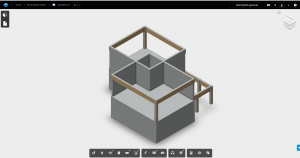
Every model you upload on A360 will be processed to be visible online, without having to download it. To me, this is the most important feature. Of course, A360 provides the ability to upload Revit models, and process them as they arrived on the platform. However, don’t expect to find tune every option, we are not in a tightly controlled document management system, but more on a collaboration platform based on trust and a powerful versioning system.

These Team Members can invite Project Contributors outside of the organization to participate on a specific project.ĭifferent project types allow for different accessibility rules for Team Members and Project Contributors. Roles and permissions are organized around Team Members, who belong to an organization and have access to every project inside this organization. Basically, anyone can edit anything, the revision control system is here to retrieve any previous version of a document in case of emergency. Just invite your teammates to your A360 hub, drag and drop documents to the platform, and start editing or commenting them. I use this occasion to share my thoughts about the evolution of the service since my last post. Recently, Autodesk unrolled a new design for A360.

When one of my colleagues brought me an A360 Team subscription from last year Autodesk University, I tested it on a small project with some of my teammates.

A year after my first post about Autodesk A360, I kept on testing its features as they came out.


 0 kommentar(er)
0 kommentar(er)
